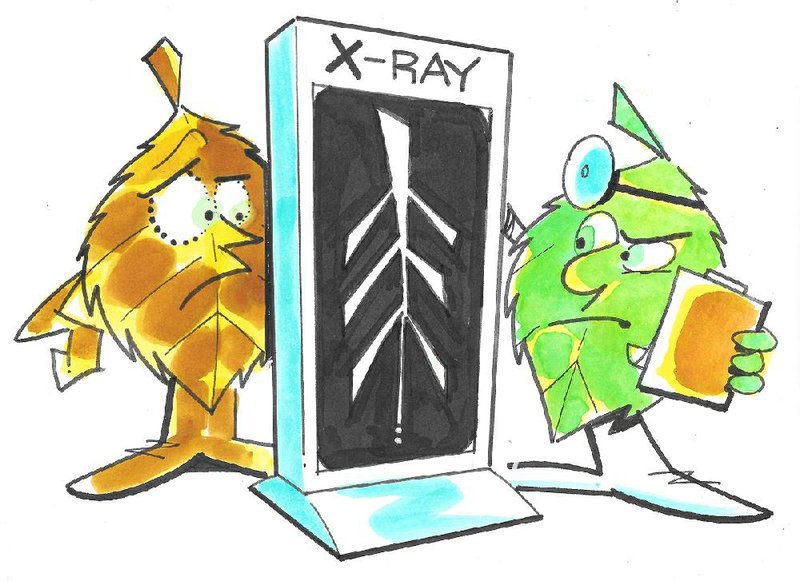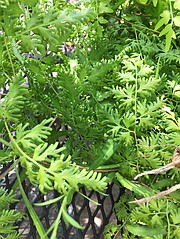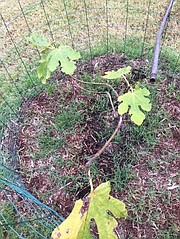Q: I discovered several skeletonized leaves on my Knock-out Rosebush plus a glob of Japanese beetles. I've lived in West Little Rock for 20 plus years and have never seen them before in my garden. Is this a new infestation for the area and what are the best treatment methods (preferably bee-friendly) to get rid of these pests?
A: Japanese beetles are normally more of a pest in the northern tier of our state, but I have received numerous questions about them this month in central Arkansas -- Pulaski and Garland counties. They are a horrid pest, and I was hoping they wouldn't make it this far south. They love rose bushes but the adult beetle will feed on a whole host of plants, up to 300 or more different species. Their larval stage is grubs which feed on the roots of lawns. If you just have a few, you can physically remove them by taking a bucket of soapy water around the yard and knocking them into it. There are several chemicals labeled for use to control the adults, but you manage them, you don't eradicate them. Malathion, Pyrethrin, Sevin, and products containing cyfluthrin or acephate will help. Here is a link to the extension fact sheet on common questions about Japanese beetles that can help: arkansasonline.com/720beetle.
Q: What are the average chill hours in Rogers? I read that in Fayetteville it is a little more than 1,000. I want to plant an apricot in the fall. I have checked the chill requirements for Blenheim and Moorpark, which are available regionally and have the highest requirements I could identify. Please comment on whether one is preferable over the other and the height I should expect from either in Rogers.
A: 1,024 is the average number of chilling hours for Northwest Arkansas, but those numbers have been fluctuating quite a bit in recent years. Chilling hours are the number of hours a plant has spent below a certain temperature during the dormant period. Chilling hours are important because they regulate the plant's ability to "wake-up" after their dormant period in winter. Unfortunately with apricots, they have a low chilling requirement, so they tend to break dormancy earlier than other fruit trees. Late frosts usually wipe out any potential crop. Potential height will depend on the variety you plant. My suggestion would be to find the longest chilling required variety. I could find Goldcot, Harcot and Harglow with 700-800 chilling hour requirements. Blenheim only needs 400 chilling hours and Moorpark is 600. I doubt you will see much fruit, but if you want to try it, go for it. You will usually have better luck with two varieties for cross-pollination, even though some varieties are self-fruitful.
Q: What is this vine? It pops up all over the place ... I really wish it wouldn't. It's pretty but climbs up my other plants and takes over.
A: Japanese climbing fern (Lygodium japonicum) is the name of this noxious perennial weed. While it usually dies back in the winter, it comes back with a vengeance the following spring. The vines can grow as high as 50-60 feet or more. As with all ferns, it does not bloom and set seeds, but produces spores on the backs of the leaves. When mature, the spores are wind-born and can easily spread. As with many invasive plants, it was introduced to the United States as an ornamental in the 1930s.
Q: My mother had a productive fig tree in Ashdown of which her grandchildren have fond memories: picking and eating figs, helping her make jam, and eating jam. My niece has always wanted a fig tree but the one she planted when she bought her first home died quickly. She planted this one a month ago and it's not looking well. I told her I'd ask the expert for recommendations.
A: Many fig trees in central and southern Arkansas have one of the largest crops of figs on them that I have seen in recent years. Figs do bear fruit on the new growth. One major problem I can see from your picture is that it is planted in the midst of the lawn. Grass is competition for water and nutrition, but whoever is mowing or edging may also damage the young tree in the process. Remove all grass and weeds, mulch the plant and keep it moist. Give it a light application of fertilizer. The first season they can struggle, but I see viable buds and there is still foliage, so it is not a lost cause yet.
Retired after 38 years with the University of Arkansas Cooperative Extension Service, Janet Carson ranks among Arkansas' best known horticulture experts. Her blog is at arkansasonline.com/planitjanet. Write to her at P.O. Box 2221, Little Rock, AR 72203 or email
jcarson@arkansasonline.com
HomeStyle on 07/20/2019


